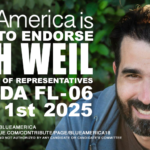It was known long before the Obama administration took over that the MMS was rubber stamping every drilling application that came along. So why didn't they clamp down on this from the beginning?
Regulators at the Minerals Management Service exempted 27 additional offshore drilling projects in the Gulf of Mexico from performing an in-depth environmental analysis—even after the Deepwater Horizon oil rig exploded, according to reporting by McClatchy. One of those exemptions went to BP.
The Deepwater Horizon rig had also been exempted from having to perform an in-depth environmental analysis using something known as a “categorical exclusion.” Categorical exclusions are used to fast-track drilling plans by eliminating paperwork that is deemed to be unnecessary or redundant because the drilling would probably have no significant effect on the environment.
While the granting of an exclusion is not the final step before a company is free to drill, it does expedite the review process.
The Department of Interior has put a temporary moratorium on new permits to drill offshore. MMS officials told McClatchy that giving a categorical exclusion isn’t the same as giving final approval to drill, and they “could not say” whether the exemptions would stand when the moratorium is lifted.
BP’s massive oil spill was already in progress when MMS applied the categorical exemptions to these 27 projects in the Gulf, exempting them from having to produce site-specific environmental impact statements as required by the National Environmental Policy Act.
“The BP rig still burning. The oil is spilling,” Kieran Suckling, executive director of the Center for Biological Diversity, told me. “And they give another categorical exclusion to BP, saying there’s no chance of a spill. It’s just insane.”
BP’s Deepwater Horizon plans were also thought to pose minimal risk to the environment. In its exploration plan for the rig, submitted to MMS years ago, BP said “no significant adverse impacts are expected” to the environment and stated that a spill was an “unlikely event.”
In the three weeks after the rig exploded, MMS gave BP a categorical exclusion for a plan to drill “at a depth of more than 4,000 feet,”according to McClatchy. Another company, Anadarko Petroleum Corp., was given approval for a plan to drill in more than 9,000 feet of water.













